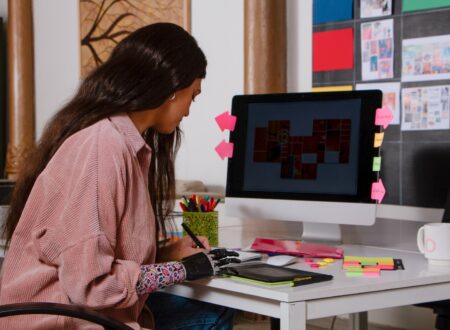In a world where environmental concerns, ethical practices, and resource scarcity dominate global conversations, the design industry is undergoing a powerful shift. From fashion and architecture to product and graphic design, sustainability is no longer a niche trend—it’s the new standard. At the heart of this movement is sustainable design: a creative approach that balances functionality, aesthetics, and environmental responsibility.
But sustainable design is more than swapping plastic for paper or adding a green logo. It’s about creating with purpose, reducing harm, and designing for a future where people, planet, and progress can coexist.
What Is Sustainable Design?
Sustainable design is the practice of developing products, environments, and experiences with minimal negative impact on the environment, society, and economy. It considers the entire lifecycle of a product—from material sourcing to disposal—and aims to reduce waste, energy use, and pollution while improving efficiency and social responsibility.
Whether it’s designing a biodegradable package, a solar-powered home, or a reusable app interface, sustainable design encourages creators to think beyond “how it looks” to how it works, how it lasts, and how it affects the world.
Why Sustainable Design Matters Now More Than Ever
Here’s why sustainable design is becoming a non-negotiable part of the creative process:
1. Environmental Urgency
Climate change, pollution, and overconsumption are reaching critical levels. Traditional manufacturing and design methods often deplete resources, contribute to emissions, and generate enormous waste. Sustainable design offers a way to reverse that trend.
2. Consumer Demand
Modern consumers—especially Gen Z and Millennials—are more eco-conscious than ever. They want to support brands that share their values, which means transparency, sustainability, and accountability are key to earning trust.
3. Economic Efficiency
Sustainable solutions often lead to long-term savings. Designing energy-efficient buildings, using recyclable materials, or streamlining supply chains can cut costs and reduce reliance on limited resources.
4. Innovation Opportunities
Constraints breed creativity. Sustainable design forces designers to think differently, sparking innovation that often leads to better, smarter products.
Principles of Sustainable Design
Sustainable design doesn’t follow a one-size-fits-all rulebook, but there are core principles that guide the practice:
1. Use Renewable or Recycled Materials
Choose resources that are abundant, biodegradable, or easily recycled. Bamboo, organic cotton, recycled plastics, and reclaimed wood are all popular eco-friendly materials.
2. Design for Durability and Longevity
Create products meant to last—not be discarded. Think about repairability, modularity, and timeless design over trend-driven styles.
3. Reduce Energy Consumption
This applies to both the manufacturing process and the end use. Whether it’s a low-energy LED lamp or an app that doesn’t drain phone batteries, energy-efficient design is crucial.
4. Minimize Waste
Design for zero waste by optimizing materials, reducing packaging, or incorporating closed-loop production systems where waste becomes input for another product.
5. Design for Disassembly and Recycling
Make it easy for products to be taken apart and recycled at the end of their life. Avoid mixed materials that are hard to separate.
6. Prioritize Social Responsibility
Sustainability also means ethical sourcing, fair labor practices, and supporting communities. A truly sustainable design supports both people and the planet.
Examples of Sustainable Design in Action
🌱 Fashion: Stella McCartney
A pioneer in eco-conscious fashion, Stella McCartney’s brand avoids animal products, uses organic cotton, and incorporates recycled materials. Her collections show that sustainability and high fashion can absolutely go hand in hand.
🏡 Architecture: Passive House Design
Passive House principles focus on energy efficiency through smart insulation, natural ventilation, and solar orientation. These homes use up to 90% less energy for heating and cooling.
📦 Packaging: Loop by TerraCycle
Loop partners with major brands to deliver products in reusable containers. Customers return the containers for cleaning and reuse, creating a circular economy that eliminates waste.
🧴 Product Design: Ethique Solid Beauty Bars
These bars eliminate the need for plastic bottles altogether by delivering shampoo, conditioner, and body wash in solid, compostable form.
💻 Digital Design: Low-Carbon Websites
Yes, even websites can be sustainable! Designers are now creating low-energy digital experiences by optimizing performance, using dark mode, and reducing unnecessary data loads.
Challenges in Sustainable Design
While the movement is growing, sustainable design still faces some real-world challenges:
- Higher upfront costs for eco-materials or ethical production
- Supply chain limitations that make ethical sourcing difficult
- Consumer education gaps, leading to greenwashing and confusion
- Trade-offs between aesthetics, functionality, and eco-criteria
Still, these challenges are not roadblocks—they’re opportunities for creativity and leadership.
How to Design More Sustainably (Even If You’re Just Starting)
Whether you’re a freelance designer, business owner, or curious creator, here are a few simple ways to embrace sustainable design:
- Ask questions: Where do my materials come from? What happens to this product after use?
- Choose better materials: Start with small swaps—like FSC-certified paper, organic fabrics, or biodegradable plastics.
- Think long-term: Design for longevity, not trends. A timeless product is more sustainable than a throwaway one.
- Educate yourself: Follow sustainability leaders, take online courses, and stay up to date with green innovations.
- Collaborate with purpose-driven brands: Align yourself with clients and partners who prioritize impact over profit.
Final Thoughts
The rise of sustainable design isn’t just about saving the planet—it’s about reimagining how we create, consume, and connect. It’s about purpose-driven creativity that’s as thoughtful as it is beautiful.
As designers, we have immense power to shape culture and influence behavior. By embracing sustainability, we don’t just build better products—we build a better future. The question is no longer if we should design sustainably—it’s how fast we can shift and how boldly we can lead.





